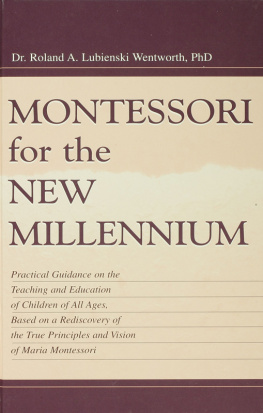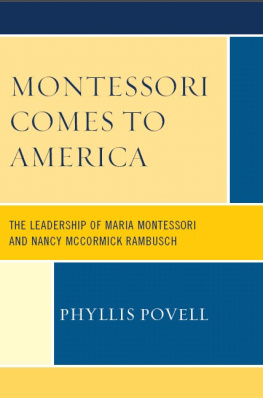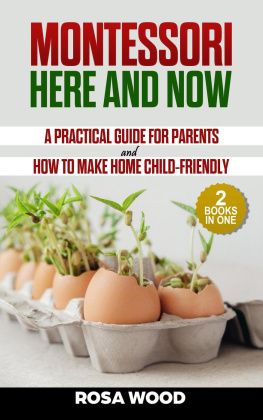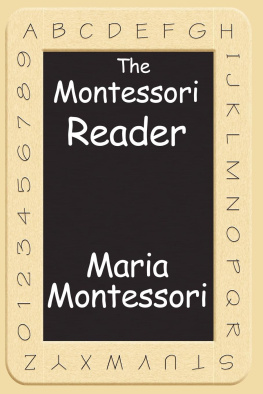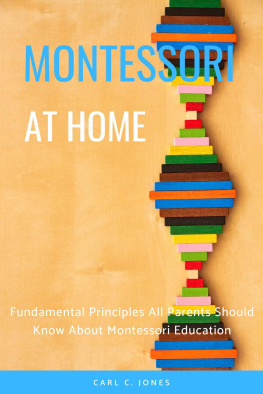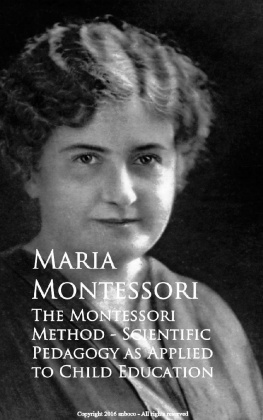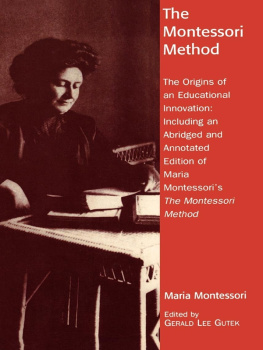Montessori for the New Millennium

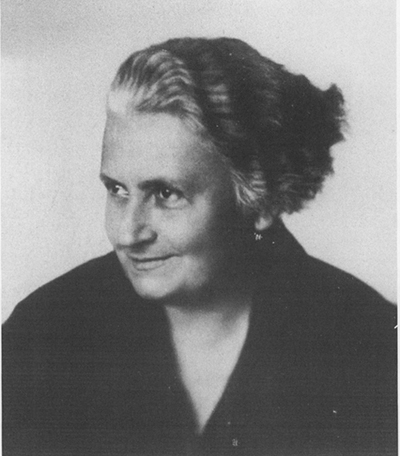
Dr. Maria Montessori, founder of the world-wide Montessori movement. Born August 31, 1870, Chiaravalle, Italy. Died May 6, 1952, Noorkwijk, Holland. The first woman in Italy to qualify as a doctor of medicine and Nobel Peace nominee.
Montessori for the New Millennium
Practical guidance on the teaching and education of children of all ages, based on a rediscovery of the true principles and vision of Maria Montessori

Roland A. Lubienski Wentworth

Original text copyright Felix Lubienski Wentworth
All texts quoted from published material of Dr. Maria Montessori, and photographs of her, copyright, reproduced by kind permission of Association Montessori Internationale, Amsterdam, Netherlands.
Photographs of Montessori material kindly supplied by Nienhuis Montessori B. V, Zelhem, Netherlands
Copyright 1999 by Lawrence Erlbaum Associates, Inc.
All rights reserved. No part of this book may be reproduced in any form, by photostat, microfilm, retrieval system, or any other means, without prior written permission of the publisher.
Lawrence Erlbaum Associates, Inc., Publishers
10 Industrial Avenue
Mahwah, NJ 07430
Cover design by Kathryn Houghtaling Lacey
Library of Congress Cataloging-in-Publication Data
Wentworth, Roland A. Lubienski.
Montessori for the new millennium / by Roland A. Lubienski
Wentworth.
p. crn.
Includes bibliographical references and indexes.
ISBN 0-8058-3136-3 (cloth : alk. paper)
1. Montessori method of education. I. Title.
LB1029.M75W46 1998
Books published by Lawrence Erlbaum Associates are printed on acid-free paper, and their bindings are chosen for strength and durability.
The final camera copy for this book was prepared by the author, and therefore the publisher takes no responsibility for consistency or correctness of typographical style.
This book is dedicated to the authors two grandchildren, Marc and Annabel, who represent the future generations for whom it was written.
The great help provided by Marc in the preparation of the text for publication is gratefully acknowledged.
Grateful thanks to Miss Alexandra Eversole, Headmistress for Gatehouse School, London, for permission to photograph in the school.
Errata
In the dedication: | of, not for Gatehouse |
Page 47, para.2, linel: | delete be |
Page 97, para.2, line 11: | insert to before meet |
Caption facing page 110: | add an e to International |
Page 111, para.2, line 13: | giving them what they need |
Page 116 page heading: | delete Index, reposition 116 |
Page 121, para.1, line 1: | songs |
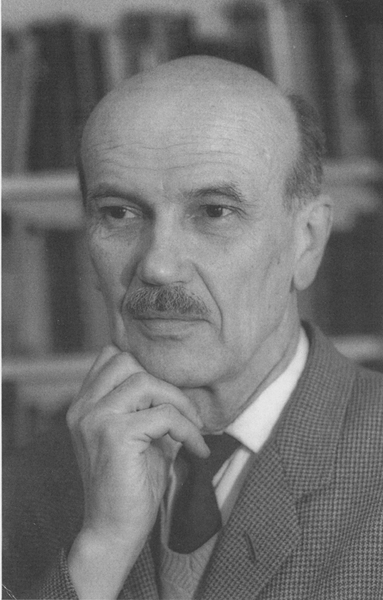
Dr. Roland A. Lubienski Wentworth, PhD. Bom July 22, 1900, Krakow, Poland. Died May 30, 1997, London, England. Disciple and personal friend of Maria Montessori. Inventor of the Lubienski Maths Alive! system for teaching mathematics the Montessori way.
Biographical Note on Roland Lubienski Wentworth
by Felix Lubienski Wentworth
Roland, my father, was born on July 22nd, 1900 in Krakow, in that part of Poland then ruled by the Austrian Empire, into an aristocratic Polish family traceable back to the 15th century. He was the great-great- grandson of the first Count Lubienski, a minister in the Grand Duchy of Warsaw, but the family was already illustrious as a result of having produced, over the centuries, no less than three archbishop-primates of Poland, and several bishops. He was the fourth of five children, four boys and a girl, and was baptized Zbigniew Antony Lubienski. Many years later, in 1947, having settled in England in 1933, and having just acquired British nationality, he adopted the additional surname of Wentworth, which had been the baptismal name of his great-uncle, Thomas Wentworth Lubienski. At the same time he officially changed his forename Zbigniew, which the English had always found unpronounceable, to Roland, by which name he had asked to be known ever since his first arrival in England. He never explained why he had chosen that name, but the closeness between the names Roland and Poland cannot have been altogether fortuitous.
His powerful intellect became apparent early on; and already in his teens he applied it to the study of philosophy, having declared his intention of entering holy orders. Whilst still not ordained he was sent to the Gregorian College in Rome to pursue his theological studies. But while there he gradually came to recognize that the strongly logical basis of his philosophical studies had displaced his religious faith, and so he felt he had no alternative but to abandon his intention of becoming a priest the most difficult decision he ever had to make, he said. After a year spent in doing his military service in the cavalry, he enrolled in the philosophy department of Krakows famed Jagiellon University, to study for a Ph.D. When he came to submit his thesis, which was on the English philosopher Thomas Hobbes, it was so long and detailed that before it could be accepted he had to cut it down to a quarter of its size. The thesis was subsequently published in full as a book, translated into German.
After graduating he became a lecturer in the same university department of philosophy; and subsequently, at the age of 28, he met and married another intellectual, who happened also to be a distant cousin, Countess Helen Czosnowska. It was she who, shortly afterwards, came under the spell of the great educationist, Maria Montessori, and together both of them then ardently followed her course of study. Always an idealist, my father saw in Montessoris revolutionary approach to education a new direction to follow in seeking to make the world a better place. They both became not only devoted disciples but close personal friends of hers as well. When I, their son Felix, was born, Maria Montessori consented to be my godmother, and from the outset my parents set about trying to raise me according to Montessori principles.
As their interest in the Montessori method deepened, each of them began to apply their own creative talent to it. Roland, who had always enjoyed math, recognized that many children acquire a life-long incomprehension and dislike of math, and he was convinced that this mental block could be avoided by using suitable manipulative materials of the kind Montessori had pioneered. He recognized that Montessoris basic bead material had limitations, and began to develop the use of 1-cm cubes instead, to create a whole new way of carrying the teaching of mathematics much further forward. To his great pleasure, it was a development that Montessori herself generously welcomed and encouraged. Much later he remembered a chance meeting that he had had as a boy on a train, with a psychic who foretold that one day he would create a great invention.
Next page
